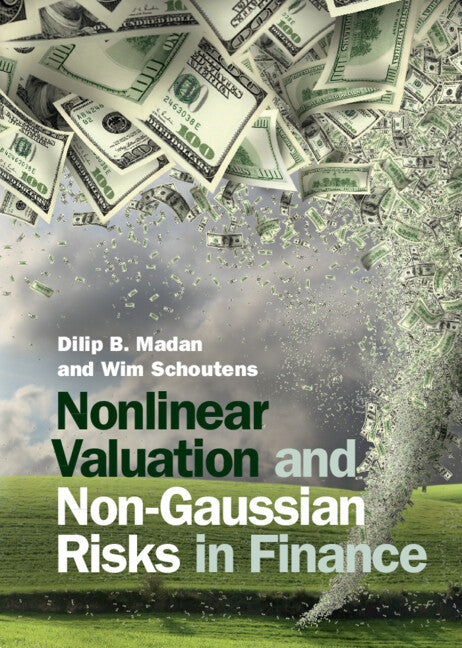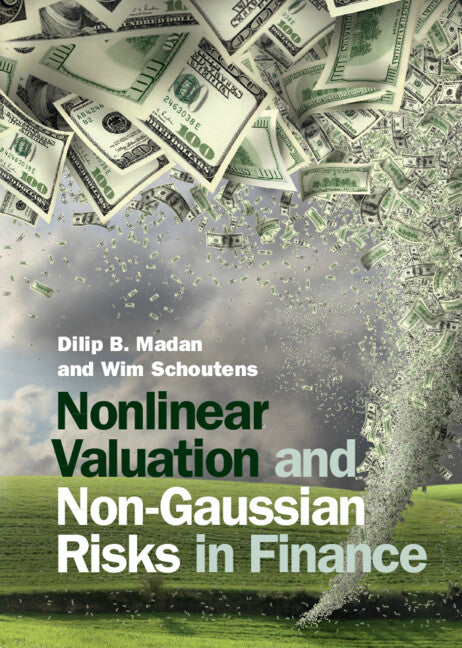Freshly Printed - allow 6 days lead
Couldn't load pickup availability
Nonlinear Valuation and Non-Gaussian Risks in Finance
Explore how market valuation must abandon linearity to deliver efficient resource allocation.
Dilip B. Madan (Author), Wim Schoutens (Author)
9781316518090, Cambridge University Press
Hardback, published 3 February 2022
281 pages
25 x 17.5 x 2 cm, 0.7 kg
'… a nonlinear non-Gaussian valuation account for risk management in finance that will be of use to practitioners and researchers in financial risk.' Hernando Burgos-Soto, zbMATH
What happens to risk as the economic horizon goes to zero and risk is seen as an exposure to a change in state that may occur instantaneously at any time? All activities that have been undertaken statically at a fixed finite horizon can now be reconsidered dynamically at a zero time horizon, with arrival rates at the core of the modeling. This book, aimed at practitioners and researchers in financial risk, delivers the theoretical framework and various applications of the newly established dynamic conic finance theory. The result is a nonlinear non-Gaussian valuation framework for risk management in finance. Risk-free assets disappear and low risk portfolios must pay for their risk reduction with negative expected returns. Hedges may be constructed to enhance value by exploiting risk interactions. Dynamic trading mechanisms are synthesized by machine learning algorithms. Optimal exposures are designed for option positioning simultaneously across all strikes and maturities.
1. Introduction
2. Univariate risk representation using arrival rates
3. Estimation of univariate arrival rates from time series data
4. Estimation of univariate arrival rates from option surface data
5. Multivariate arrival rates associated with prespeci?ed univariate arrival rates
6. The measure-distorted valuation as a financial objective
7. Representing market realities
8. Measure-distorted value-maximizing hedges in practice
9. Conic hedging contributions and comparisons
10. Designing optimal univariate exposures
11. Multivariate static hedge designs using measure-distorted valuations
12. Static portfolio allocation theory for measure-distorted valuations
13. Dynamic valuation via nonlinear martingales and associated backward stochastic partial integro-di?erential equations
14. Dynamic portfolio theory
15. Enterprise valuation using in?nite and finite horizon valuation of terminal liquidation
16. Economic acceptability
17. Trading Markovian models
18. Market implied measure-distortion parameters
References
Index.
Subject Areas: Mathematical physics [PHU], Finance [KFF], Econometrics [KCH], Data analysis: general [GPH]


